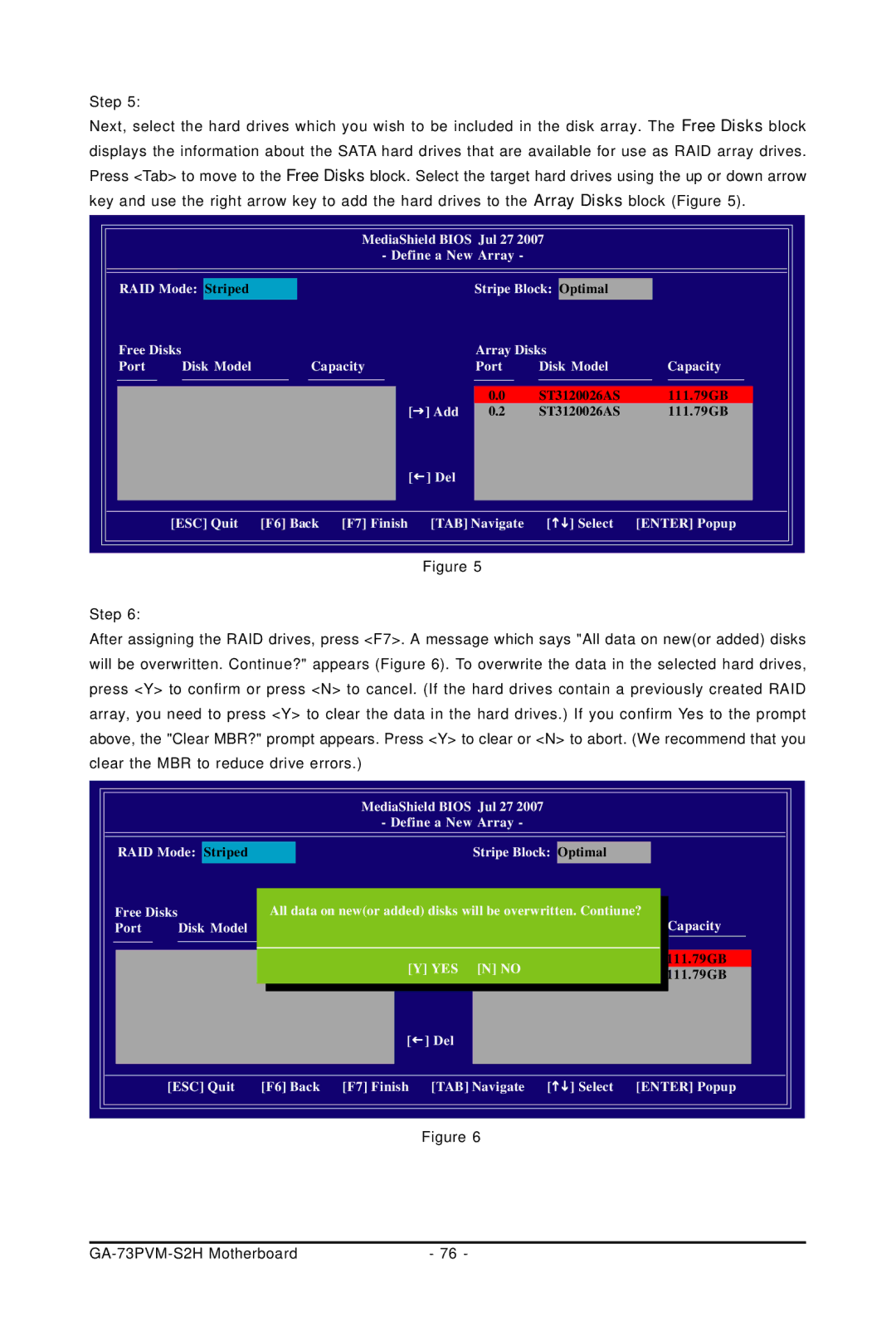
Step 5:
Next, select the hard drives which you wish to be included in the disk array. The Free Disks block displays the information about the SATA hard drives that are available for use as RAID array drives. Press <Tab> to move to the Free Disks block. Select the target hard drives using the up or down arrow key and use the right arrow key to add the hard drives to the Array Disks block (Figure 5).
MediaShield BIOS Jul 27 2007
- Define a New Array -
RAID Mode: Striped |
|
| Stripe Block: Optimal |
| ||
Free Disks |
|
| Array Disks |
| ||
Port | Disk Model | Capacity |
| Port | Disk Model | Capacity |
|
|
|
| 0.0 | ST3120026AS | 111.79GB |
|
|
| [J] Add | 0.2 | ST3120026AS | 111.79GB |
|
|
| [I] Del |
|
|
|
| [ESC] Quit | [F6] Back [F7] Finish | [TAB] Navigate | [KL] Select | [ENTER] Popup | |
Figure 5
Step 6:
After assigning the RAID drives, press <F7>. A message which says "All data on new(or added) disks will be overwritten. Continue?" appears (Figure 6). To overwrite the data in the selected hard drives, press <Y> to confirm or press <N> to cancel. (If the hard drives contain a previously created RAID array, you need to press <Y> to clear the data in the hard drives.) If you confirm Yes to the prompt above, the "Clear MBR?" prompt appears. Press <Y> to clear or <N> to abort. (We recommend that you clear the MBR to reduce drive errors.)
MediaShield BIOS Jul 27 2007
- Define a New Array -
RAID Mode: Striped |
| Stripe Block: Optimal |
| |||
Free Disks | All data on new(or added) disks willArraybe overwrittenDisks | . Contiune? | ||||
Port | Disk Model | Capacity | Port | Disk Model | Capacity | |
|
| Clear disk | 1.0.M | ST3120026AS | 111.79GB | |
|
| [Y] YES | [N] NO | ST3120026AS | 111.79GB | |
|
| [J] Add | 1.1.M | |||
|
| [Y] YES | [N] NO |
|
|
|
|
| [I] Del |
|
|
|
|
| [ESC] Quit | [F6] Back [F7] Finish [TAB] Navigate | [KL] Select | [ENTER] Popup | ||
Figure 6
| - 76 - |
